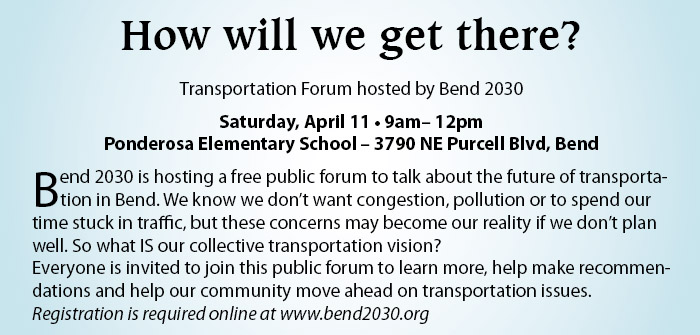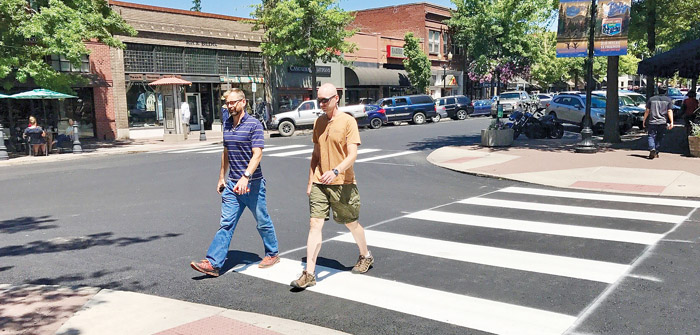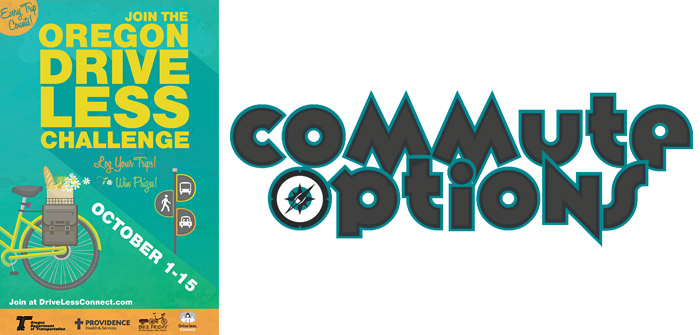Benefitting Central Oregon Communities
Imagine if all Oregon communities and cities of all sizes had safe, affordable and efficient ways for residents and visitors to use active transportation, such as riding the bus, walking, bicycling and carpooling. Tree lined streets, designated bike paths, maintained sidewalks, well-lit and covered bus stops and adequate parking are what may come to mind. These components—what we call Transportation Options—all contribute to prosperous, healthy places that we all want to live in.
Transportation Options is an economically smart move and a good example of high benefit to low cost use of resources. It uses, or slightly modifies, existing infrastructure for more efficient uses, rather than designing and building more infrastructure. One example of this may be taking a right-of-way and turning it into a park and ride lot. Another example may be taking a wide shoulder of road and turning it into a designated bike lane. Transportation Options also includes programs that encourage active transportation such as workplace incentives or bicycle safety education programs.
During the next 25 years, Oregon’s population is expected to increase by nearly 30 percent. This, along with other factors such as dwindling financial resources, changing transportation preferences, an aging baby boomer population, increasing public health concerns and state environmental goals, means that Oregon needs to be proactive in providing Transportation Options across the state.
The newly released, 25 year Oregon Transportation Options Plan, assesses state, regional and local facilities and services and creates a vision for safe, efficient and sustainable transportation system that enhances Oregon’s quality of life and economic vitality. The goals of the Transportation Options Plan are to improve and increase: public safety, transportation funding, total accessibility, better mobility, stronger economy, healthier people and environment, sound land use and transportation, better coordination, human equity and dissemination of knowledge and information.
What does this mean for Central Oregon? Smaller communities such as Madras or Prineville can use the plan to develop programs that fit best such as enhancing a new pedestrian right-of-way or crosswalk. For larger communities such as Bend, the plan can provide more robust options such as how to incorporate active transportation into existing urban infrastructure. Any city, county or region can use and benefit from the plan. Even businesses can share the vision, strategies and goals of the plan and use them in a business setting to help their workforce engage in active transportation.
Commute Options Executive Director Jeff Monson participated in the year-long plan creation process as a representative of Central Oregon. “As a member of the Plan’s Policy Advisory Committee, I had a great opportunity to work with a wide cross section of stakeholders from around Oregon. We developed a plan that is a model for the country and can be used in all size communities,” said Monson.
Learn more about the plan at www.oregon.gov/ODOT/TD/TP/pages/plans.aspx or contact Commute Options at www.commuteoptions.org.
Commute Options promotes choices that reduce the impacts of driving alone. For more information, contact Executive Director, Jeff Monson at 541-330-2647 or visit www.commuteoptions.org
Katy Bryce is a freelance writer in Bend. www.katybryce.com





